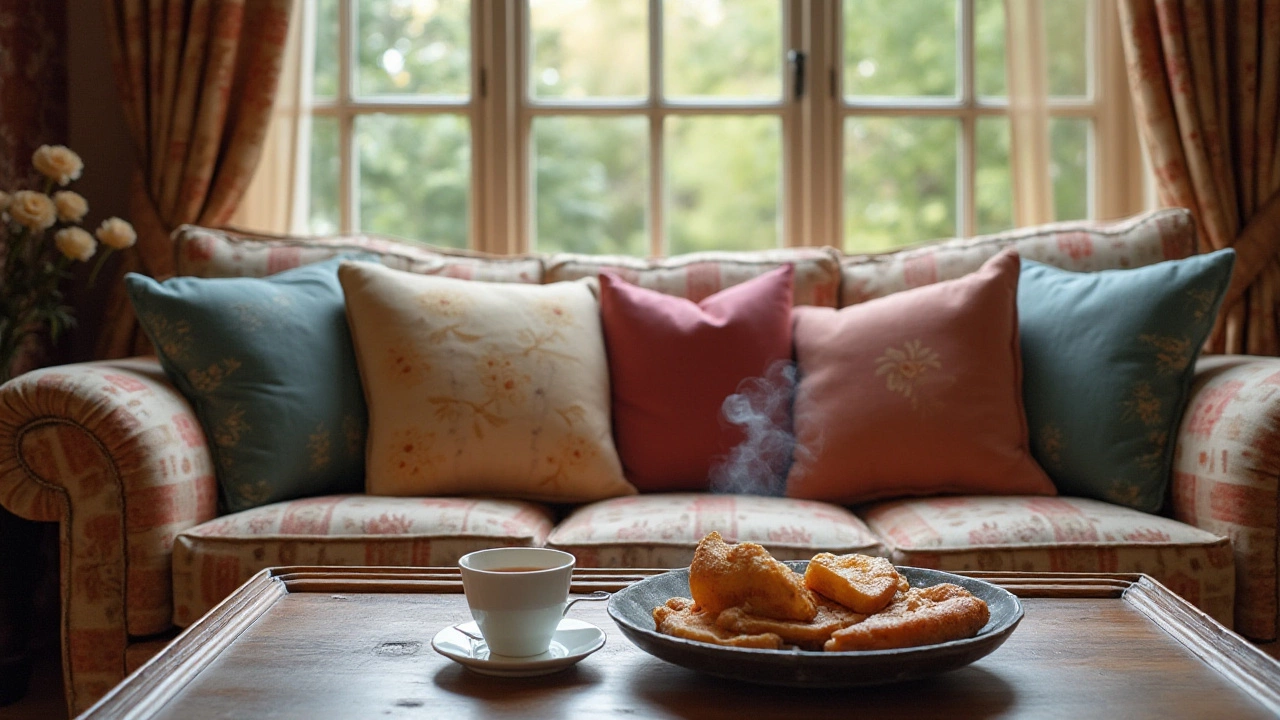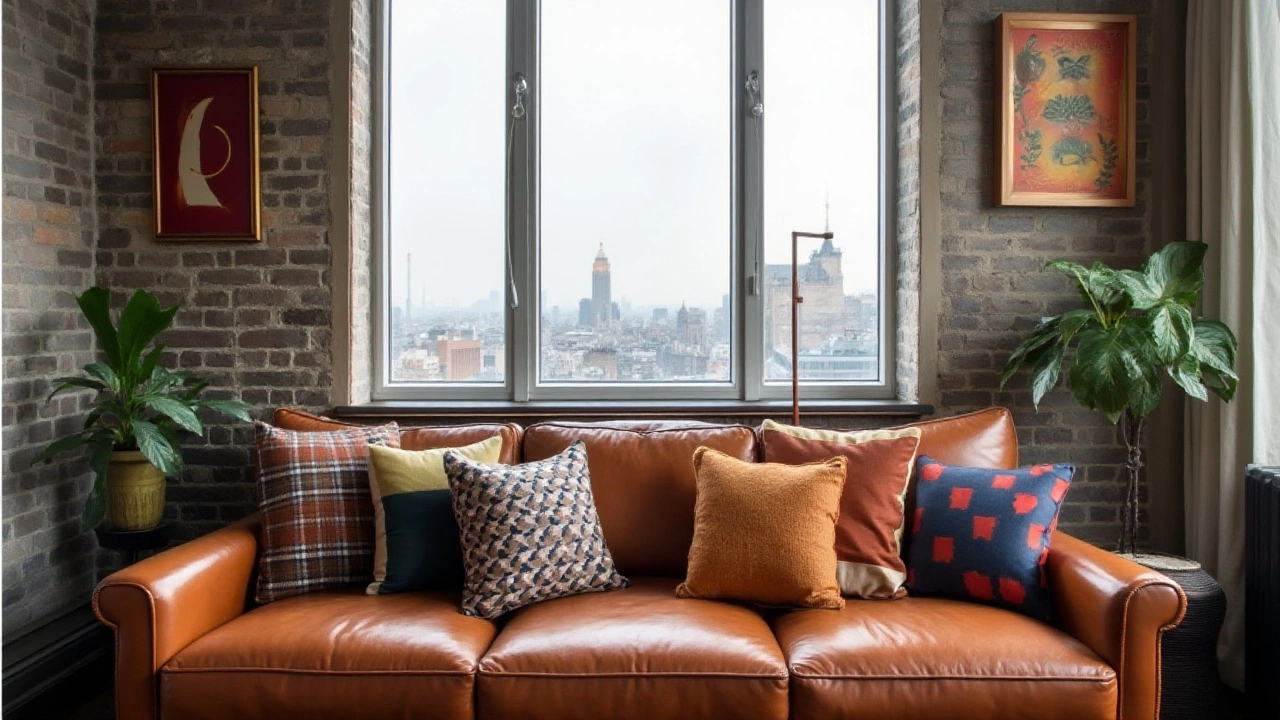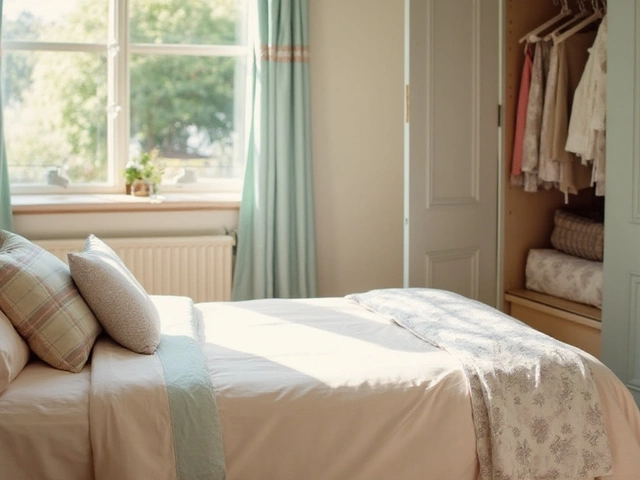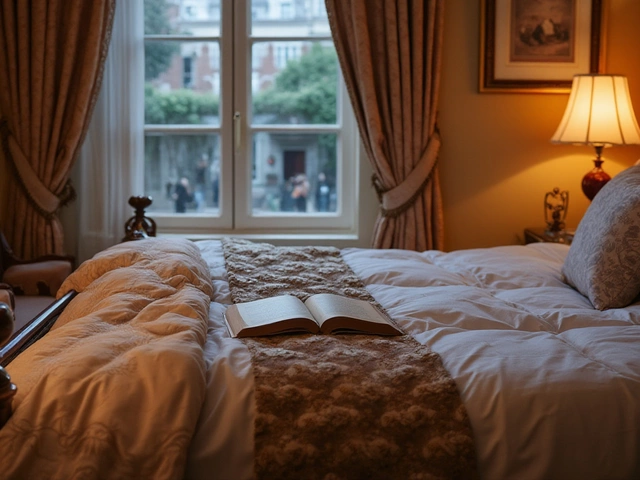Sofa cushions are more than just an accessory—they are key players in shaping the mood and aesthetic of your living room. As you sink into your couch after a long day, those plush companions provide not just comfort, but an opportunity to infuse personality and style into your space.
But the question arises—how many cushions should you have? The answer varies, intricately tied to both form and function. Just as each living space has its own rhythm, so should the arrangement of your sofa cushions, tailored uniquely to balance visual appeal and practical use.
Let’s delve into the world of cushions, exploring the magic number that complements your home’s vibe while ensuring comfort and creating a beautifully curated look.
- The Importance of Sofa Cushions
- Choosing the Right Number
- Balancing Style and Comfort
- Color and Pattern Considerations
- Different Styles of Cushion Arrangement
- Maintenance Tips for Your Cushions
The Importance of Sofa Cushions
Sofa cushions are more than just soft furnishings tossed casually onto seating. They are a vital component of interior decor, playing a significant role in defining a room's theme, tone, and comfort level. Imagine your living room without these delightful accessories. There would be an unappealing void where there should be warmth and cozy appeal. Cushions can transform a simple sofa into a striking centerpiece that captures attention while inviting guests to settle in comfortably.
Cushions provide a perfect opportunity to experiment with colors and textures without committing to permanent changes. This flexibility allows homeowners to update their living space with the change of seasons, incorporating cheerful pastels for spring or rich velvets for winter. Additionally, changing the cushion covers is an affordable way to refresh your interior style. With the plethora of choices available—from geometric patterns to intricate embroidery—the options are virtually endless. Thus, they become a canvas where creativity blossoms, enlivening the living room.
Furthermore, sofa cushions add a layer of comfort that is hard to beat. They offer the soft embrace needed during a movie night snuggle or a quick nap. Depending on the material and fill, they can provide extra support for the back, enhance posture, and even absorb sound, contributing to a serene atmosphere. As interior designer Kelly Hoppen once remarked, "Good design, like real comfort, is filling your home with furniture and items that sustain and support you.”
Cushions are essential in providing that support, turning a simple piece of furniture into a haven.
Moreover, sofa decor isn't just about personal enjoyment; it plays a significant role when hosting guests. Cushions can set the tone during gatherings, making conversation areas inviting and appealing. Guests are more likely to feel at ease in a space that radiates warmth and thoughtfulness, communicated subtly through well-chosen cushions. The tactile experience of soft fabrics and layered textures draws people in, creating a memorable setting for social interactions.
The size and placement of cushions can alter the perception of space, making small areas appear larger or drawing focus to certain elements in the room. Their strategic use can help balance a room's visual weight, harmonizing various elements to create a cohesive look. This makes cushions a powerful tool in interior styling—an aspect not to be underestimated. They are small but mighty elements that hold the key to both visual harmony and physical comfort, making them indispensable in any well-curated home. Indeed, cushion arrangement is more than just an aesthetic choice—it is a reflection of lifestyle and personality.
Choosing the Right Number
Embarking on the journey of choosing the right number of cushions for your sofa might seem like a trivial detail, yet it is one that can significantly impact the comfort and style of your living space. The balance between too few and too many lies in understanding the function of your sofa and the vibe you wish to project. For a two-seater sofa, the most classical arrangement is three cushions. This provides a symmetrical look while allowing for a pop of color or texture, without overcrowding the seat. Larger sofas, such as a three-seater or sectionals, can comfortably host around five to seven cushions. This frequency adds enough variety to keep the eye interested, yet remains cohesive with the sofa’s physical proportions.
Each room serves a unique purpose, reflected in its seating arrangement. For instance, in a minimalist setup, you might lean towards fewer cushions, allowing the elegance of the simplicity to shine through. Conversely, a Bohemian-style room thrives on an eclectic mix, where a generous number of cushions — each with distinct patterns and textures — adds to the layered look. Annie Driscoll, a renowned interior stylist, once observed,
"Cushions are like jewelry for the home. Their numbers and placement echo the personality harbored within those walls."Her insight underscores the invisible lines that cushions draw between function and fashion, working tirelessly to blend them seamlessly.
Consider, too, the needs of the guests who will utilize this space. In intimate settings, fewer cushions can make your sofa feel more welcoming, inviting guests to settle in without the need to constantly adjust or remove. However, in a bustling household where much of life happens on the couch, more cushions can serve as dividers or markers, creating individual space pockets for everyone. Check your sofa’s dimensions as a guideline. Generally, leaving two-thirds of your sofa clear accommodates seating comfortably without a sea of cushions spilling over the edge. When it comes to cushion arrangement, maintaining an odd number often feels more natural, providing an asymmetrical focal point that guides the eye.
Are you favoring function over form, or vice versa, in your concoction? Taking notes from the hospitality industry, where comfort and aesthetic need to coexist harmoniously, consider layering cushions in mixed sizes. Start with larger cushions at the outer edges, gradually amping up their texture and color towards the center with smaller ones. This technique not only optimizes comfort as you snuggle back but it also keeps your guest’s eye moving, curious, and engaged. For the indecisive decorator, it might be helpful to see cushion arrangements as art — there is no wrong answer, only preferences that evolve over time. Should you find yourself in a fix, remember that the cozy warmth of home is often defined not by the objects within it, but by the stories they tell. Home styling is as much a journey as any other, where the arrangement is merely one chapter in the welcoming tales your cushions whisper to you.

Balancing Style and Comfort
When it comes to decorating your living space with cushions, finding the sweet spot between style and comfort can be a rewarding challenge. It's like choreographing a delightful dance for the eyes and the body alike. Too many cushions and you end up frustrated at having to clear a spot just to sit down; too few, and your sitting area looks sparse and uninviting. So how do you strike that balance? It boils down to understanding your sofa's personality, your personal taste, as well as your lifestyle needs.
First, consider the size and style of your sofa. If you own a mid-century modern piece with sleek lines and a low back, a minimalist approach with an odd number of sofa decor cushions could enhance its aesthetic. Opt for three to five cushions, allowing negative space to accentuate the sofa’s design. Conversely, a plush, oversized couch beckons more layers that invite comfort, with anywhere from five to nine cushions providing both a sense of opulence and a welcoming feel.
A crucial element in this balancing act is using cushions of varying sizes and shapes which add depth and interest. Imagine a mix that includes large square cushions at the back for support, complemented by smaller, lumbar cushions that offer a splash of color or texture. They should invite snuggling into your sofa, providing tactile comfort while serving as the perfect frame for your sofa's palette.
“The best interiors balance comfort with aesthetic.” - Anouska Hempel, Interior Designer
Color and texture play pivotal roles in balancing style with comfort. Choose hues that either complement or contrast with your sofa’s color. This approach brings a layer of complexity to your decor. Use a mix of textures—think velvet, cotton, leather, or even silk—for added richness and a tactile experience that goes beyond the visual. This variance can make a simple gray couch suddenly burst with sophistication and warmth.
Don't forget the logistical side. How do people typically use the space? If your sofa is the main entertainment venue for game nights with friends or movie marathons, prioritize comfort with oversized, lush cushions. Houses with pets or children may benefit from easy-to-clean fabrics that withstand wear and tear, ensuring that style doesn’t detract from durability. Considerations of practicality ensure that the beauty of your setup doesn’t outshine your comfort.
In addition, rotating the cushion arrangement could be a fun way to keep your style fresh and adaptable. Seamlessly blend the aesthetics with your home’s theme, swap according to seasons or special occasions to bring a breath of fresh air into the lounge. This approach allows for an ever-evolving decor landscape that can adapt to your mood or even those unexpected gatherings.
Ultimately, the game is to ensure the conversation between style and comfort on your sofa flows as naturally as the light through a window on a sunny afternoon. Each cushion has a role, from elevating the beauty aspect to being part of the cozy end-of-day haven. In finding this balance, your living room transforms from a mere room to a cherished space echoing personality and warmth.
Color and Pattern Considerations
When it comes to selecting the color and pattern of your sofa cushions, it's like painting the final strokes on a canvas. Your choices here can amplify or tone down the entire room's vibe significantly. Think of your living room as a story, and the cushions are punctuation marks that can either add excitement or bring calmness. Colors can convey emotions—warm tones like reds and oranges can energize, while cool shades such as blues and greens can create a peaceful atmosphere.
Patterns, on the other hand, bring in texture and character. It's fascinating how patterns can make a space feel dynamic or grounded. For instance, geometric designs in bold colors typically make a modern and striking statement. Meanwhile, florals may lend a touch of whimsy and vintage charm. While choosing these, consider the existing elements in your room. Do they blend seamlessly with the hues on your curtains, the material on your chaise, and the streaks on your rug? The answer will guide the patterns you select.
One popular approach is the 60-30-10 rule—use one color for 60% of the room, a secondary color for 30%, and an accent for 10%. Applying this concept to cushion arrangements can offer a pleasing balance. An example might be having a dominant color like a soft beige envelop the room's primary elements, a secondary shade in deep green in the form of large cushions, with smaller accented pieces in vibrant golds bringing a pop of life. Home styling experts often say, "Let your cushions narrate a color story that connects all pieces in a room."
"The best rooms have something to say about the people who live in them." - David Hicks
Additionally, consider the power of layering. A layered look with various textures—from velvets and silks to woven cottons—adds depth to the space, breaking the monotony and inviting tactile exploration. Don't shy away from mixing patterns, as long as you maintain a thread of continuity through colors or design motifs. It's all about striking that artistic balance, which makes cushion arrangement a rather personal art.
Sometimes less is more, and other times, abundant patterns create an eclectic yet cohesive scheme. Keep the base neutral if you like experiments with wild patterns. For a chic visual feast, aim for a blend of two patterns and a solid. Be it tribal or minimalist, your home styling journey is yours to craft, with your sofa cushions leading the aesthetic parade.

Different Styles of Cushion Arrangement
Arranging cushions on your sofa goes beyond just tossing them to and fro. It’s a delicate dance of colors, textures, and shapes that conjures a spectrum of feelings—from relaxed and casual to chic and elegant. The number of cushions becomes a supporting actor in this play, and understanding its role can turn a mundane seating area into a statement piece.
The classic symmetrical arrangement is the go-to for those who lean towards timeless elegance. It typically involves using an even number of cushions, doubled up with similar sizes on each end of the sofa. This arrangement whispers of balance and formality, offering a clean, polished look. In contrast, the asymmetrical arrangement is like a dance that breaks convention, appealing to those with an artistic flair. This approach often involves an odd number of cushions, intentionally varying sizes and textures to create visual intrigue and depth.
For those who favor a lived-in or bohemian style, piling on cushions haphazardly—with splashes of vibrant patterns and eclectic shapes—could mirror an untamed spirit. Consider mixing circular cushions or bolsters alongside standard square options to lend a dynamic feel, as if inviting your guests to sink into a landscape of spontaneous comfort.
Layering and Color Coordination
Another dimension of cushion arrangement lies in layering and color choice. Layering cushions of different sizes, starting with larger ones at the back and smaller ones up front, can give your seating an inviting depth, like a warm hug. Color coordination plays a crucial role here, providing harmony or contrast, depending on the desired effect. Neutral shades can serve as a backdrop for a pop of color, or you can opt for analogous shades to maintain a subtle blend.
"Color is a power which directly influences the soul," said Wassily Kandinsky, emphasizing the emotional impact color can have when strategically used in textile decoration.
To truly make your living room sparkle, don't shy away from experimenting. Feel free to play with different fabrics, alternating between smooth velvets, rustic linens, and cozy knits, transforming a conventional space into a vibrant tapestry. It's these stylistic choices, tinged with character and warmth, that knit a room with personality, ensuring your sofa is not just a seat, but a centerpiece.
Maintenance Tips for Your Cushions
When it comes to maintaining your beloved sofa cushions, consistency is key. Regular care ensures not only enhanced longevity but also retains the style and comfort they provide. Start by familiarizing yourself with the fabric type and its specific care instructions. Each fabric, whether it’s velvet, linen, or cotton, possesses unique characteristics, requiring tailored cleaning approaches. Invest in quality fabric protectors that work like a shield against spills and everyday wear and tear, keeping your home styling intact.
A vacuum cleaner is your cushion's best friend. Every week, gently vacuum the surface to remove dust, dander, and crumbs that settle over time. This routine prevents allergens from building up, contributing to a healthier home environment. Occasionally, you might encounter an accidental spill. Quick action is vital; blot the area with a clean cloth rather than wiping, which can spread the stain, making it worse. Reinforce this preventive step by applying a fabric spray to safeguard your cushions from future mishaps.
Fluffing is an often underestimated task but essential in maintaining the comfort and shape of your sofa decor. Just like you fluff your pillows, give your cushions some TLC by rotating and fluffing them weekly. This process redistributes the filling, preventing lumps and uneven wear. Consider airing them out every few months, especially if you live in a humid environment. Strong sunlight and fresh air help keep musty odors at bay.
For those with feather or down-filled cushions, regularly redistributing the feathers by hand can make a significant difference. Over time, feathers can shift to one side, causing the cushion to lose its shape. Pros recommend that for deeper cleaning, you should have your cushions professionally cleaned annually. It’s a worthy investment for extending the life and maintaining the quality of your cushion arrangement.
Storage is another crucial factor. If you plan on storing cushions during different seasons, ensure they are completely dry before packing to avoid mold growth. Utilize vacuum-sealed bags for long-term storage to save space and protect from dampness, dirt, and pests. When stored properly, your cushions will emerge fresh and ready to be part of your beautifully styled seating once again.
"Cushions, often overlooked, are the final touch that perfects a well-styled room. Caring for them is not just about aesthetics but about nurturing comfort," notes interior designer Sarah Richardson, emphasizing their importance in home décor.
Routine Check-Ups
Lastly, incorporate routine check-ups. Inspect seams and zippers for damage, and don’t ignore minor repairs—they prevent costly replacements. Re-stuffing or buying new inserts can reinvigorate saggy cushions, bringing back that plump, inviting appearance that enhances your living room’s allure. With these maintenance secrets, your cushions will not only adorn your sofa but elevate the entire room's aesthetic with their pristine presence.







